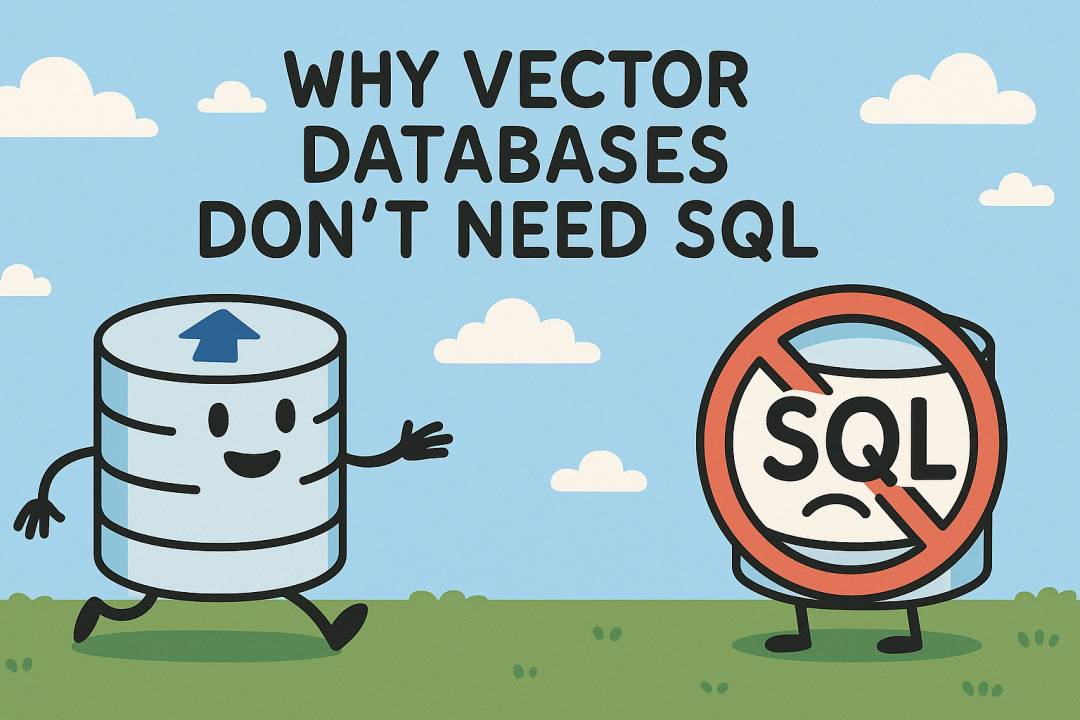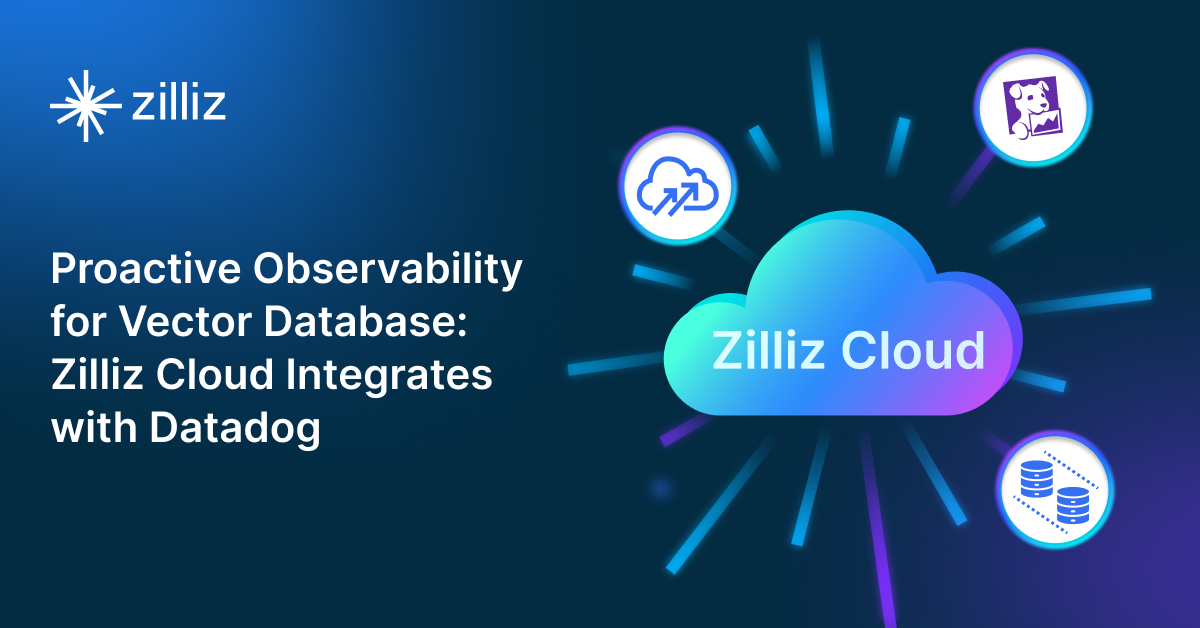SingleStore vs Qdrant Choosing the Right Vector Database for Your AI Apps

What is a Vector Database?
Before we compare SingleStore and Qdrant, let's first explore the concept of vector databases.
A vector database is specifically designed to store and query high-dimensional vectors, which are numerical representations of unstructured data. These vectors encode complex information, such as the semantic meaning of text, the visual features of images, or product attributes. By enabling efficient similarity searches, vector databases play a pivotal role in AI applications, allowing for more advanced data analysis and retrieval.
Common use cases for vector databases include e-commerce product recommendations, content discovery platforms, anomaly detection in cybersecurity, medical image analysis, and natural language processing (NLP) tasks. They also play a crucial role in Retrieval Augmented Generation (RAG), a technique that enhances the performance of large language models (LLMs) by providing external knowledge to reduce issues like AI hallucinations.
There are many types of vector databases available in the market, including:
- Purpose-built vector databases such as Milvus, Zilliz Cloud (fully managed Milvus)
- Vector search libraries such as Faiss and Annoy.
- Lightweight vector databases such as Chroma and Milvus Lite.
- Traditional databases with vector search add-ons capable of performing small-scale vector searches.
SingleStore is a distributed, relational, SQL database management system with vector search as an add-on and Qdrant is a vector database. This post compares their vector search capabilities.
SingleStore: Overview and Core Technology
SingleStore has made vector search possible by putting it in the database itself, so you don’t need separate vector databases in your tech stack. Vectors can be stored in regular database tables and searched with standard SQL queries. For example, you can search similar product images while filtering by price range or explore document embeddings while limiting results to specific departments. The system supports both semantic search using FLAT, IVF_FLAT, IVF_PQ, IVF_PQFS, HNSW_FLAT, and HNSW_PQ for vector index and dot product and Euclidean distance for similarity matching. This is super useful for applications like recommendation systems, image recognition and AI chatbots where similarity matching is fast.
At its core SingleStore is built for performance and scale. The database distributes the data across multiple nodes so you can handle large scale vector data operations. As your data grows you can just add more nodes and you’re good to go. The query processor can combine vector search with SQL operations so you don’t need to make multiple separate queries. Unlike vector only databases SingleStore gives you these capabilities as part of a full database so you can build AI features without managing multiple systems or dealing with complex data transfers.
For vector indexing SingleStore has two options. The first is exact k-nearest neighbors (kNN) search which finds the exact set of k nearest neighbors for a query vector. But for very large datasets or high concurrency SingleStore also supports Approximate Nearest Neighbor (ANN) search using vector indexing. ANN search can find k near neighbors much faster than exact kNN search sometimes by orders of magnitude. There’s a trade off between speed and accuracy - ANN is faster but may not return the exact set of k nearest neighbors. For applications with billions of vectors that need interactive response times and don’t need absolute precision ANN search is the way to go.
The technical implementation of vector indices in SingleStore has specific requirements. These indices can only be created on columnstore tables and must be created on a single column that stores the vector data. The system currently supports Vector Type(dimensions[, F32]) format, F32 is the only supported element type. This structured approach makes SingleStore great for applications like semantic search using vectors from large language models, retrieval-augmented generation (RAG) for focused text generation and image matching based on vector embeddings. By combining these with traditional database features SingleStore allows developers to build complex AI applications using SQL syntax while maintaining performance and scale.
Qdrant: Overview and Core Technology
Qdrant is a vector database built specifically for similarity search and machine learning applications. It's designed from the ground up to handle vector data efficiently, making it a top choice for developers working on AI-driven projects. Qdrant excels in performance optimization and can work with high-dimensional vector data, which is crucial for many modern machine learning models.
One of Qdrant's key strengths is its flexible data modeling. It allows you to store and index not just vectors, but also payload data associated with each vector. This means you can run complex queries that combine vector similarity with filtering based on metadata, enabling more powerful and nuanced search capabilities. Qdrant ensures data consistency with ACID-compliant transactions, even during concurrent operations.
Qdrant's vector search capabilities are a core part of its architecture. It uses a custom version of the HNSW (Hierarchical Navigable Small World) algorithm for indexing, known for its efficiency in high-dimensional spaces. This allows for fast approximate nearest neighbor search, which is essential for many AI applications. For scenarios where precision trumps speed, Qdrant also supports exact search methods.
What sets Qdrant apart is its query language and API design. It offers a rich set of filtering and query options that work seamlessly with vector search, allowing for complex, multi-stage queries. This makes it particularly good for applications that need to perform semantic search alongside traditional filtering. Qdrant also includes features like automatic sharding and replication to help you scale as your data and query load grow. It supports a variety of data types and query conditions, including string matching, numerical ranges, and geo-locations. Qdrant's scalar, product, and binary quantization features can significantly reduce memory usage and boost search performance, especially for high-dimensional vectors.
Key Differences
Scalability and Performance
Scalability is a strength for both but they approach it differently. SingleStore uses a distributed architecture to scale horizontally by adding nodes which is great for large scale high concurrency workloads. Its distributed query processor ensures performance even when handling billions of vectors or complex queries that combine vector and SQL operations.
Qdrant also scales horizontally using automatic sharding and replication to handle growing data and query load. It’s optimized for high dimensional vector data and uses scalar and binary quantization to reduce memory usage while keeping search speed fast. This makes Qdrant perfect for real-time AI applications that need to process large vector datasets in real-time.
Flexibility and Customization
SingleStore has a SQL driven environment for customization where you can combine vector search with traditional relational queries. While this is great for integrating vector search into broader data workflows it’s less flexible for specialized vector operations. The system’s structured configuration can limit customization for some advanced use cases.
Qdrant is highly flexible and has a rich API for building complex queries. You can perform multi stage queries that combine vector similarity with filters based on metadata or payload attributes. This flexibility extends to handling different query conditions like numerical ranges, text matching and geo-locations. Qdrant’s customization options make it perfect for use cases that require nuanced and highly customized search operations.
Integration and Ecosystem
SingleStore is a full fledged database platform so it’s a great fit for environments that need to integrate vector search into broader database workflows. It works well with teams already familiar with relational databases and has smooth integration with existing SQL based systems. This makes it easier to build applications that combine transactional and analytical capabilities with vector search.
Qdrant is tailored for AI and machine learning ecosystems. It integrates seamlessly with popular frameworks like PyTorch and TensorFlow so it’s perfect for developers building AI pipelines. Its REST and gRPC APIs make it compatible with modern applications and you can easily embed vector search into different machine learning workflows. For teams building AI driven applications Qdrant is a more natural fit.
Ease of Use
SingleStore stands out for being familiar to developers who are used to SQL. Its SQL driven interface makes it easy to adopt for those transitioning from traditional relational databases. The documentation is focused on helping you combine relational and vector queries which makes onboarding for mixed workloads easier.
Qdrant is designed to be intuitive for AI developers, has user friendly APIs and clear documentation. The platform is simple to implement and you can set up and execute vector similarity search in no time. For teams with machine learning focus Qdrant’s API and support for advanced query scenarios makes the learning curve much smaller.
Cost
Cost depends on your use case. SingleStore’s broader capabilities as a full database platform may come with higher operational costs. But if you need a single solution for relational and vector data it can eliminate the need for multiple systems and potentially lower overall costs.
Qdrant being purpose built for vector search is likely more cost effective for specialized workloads. Its optimizations like scalar and binary quantization help conserve memory and improve performance and reduce hardware requirements. For applications that are only about vector similarity search Qdrant is more cost effective.
Security
SingleStore has enterprise grade security features including encryption, role based access control and compliance with various regulatory standards. This makes it a good fit for organizations with high security requirements.
Qdrant has robust security features including encryption, authentication and access control. While it may not match SingleStore’s enterprise grade offerings it has enough security for most AI driven applications. For highly regulated industries or those that require advanced compliance features SingleStore may have an edge.
When to use SingleStore
SingleStore is for when you need to embed vector search into a bigger database. Its SQL approach is great for applications that mix transactional and analytical workloads with vector similarity, like e-commerce platforms filtering by price or AI dashboards with semantic search. SingleStore’s distributed architecture means it can handle large datasets so it’s a good choice for high concurrency and mixed data types enterprises.
When to use Qdrant
Qdrant is for vector search and machine learning use cases. Its ability to combine similarity search with metadata filtering makes it perfect for AI driven workflows like personalized recommendations, semantic search or image and document retrieval. Developers working with high dimensional vector data from large language models or machine learning pipelines will love Qdrant’s specialized design, fast query handling and strong integrations with popular ML frameworks like PyTorch and TensorFlow.
Summary
SingleStore and Qdrant are different beasts. SingleStore is an all-in-one database that embeds vector search with SQL, perfect for complex enterprise workloads. Qdrant with its focus on vector similarity and flexible queries is better for AI driven use cases that require high performance search and filtering. The choice between the two will depend on your use case, data types and scalability requirements.
Read this to get an overview of SingleStore and Pinecone but to evaluate these you need to evaluate based on your use case. One tool that can help with that is VectorDBBench, an open-source benchmarking tool for vector database comparison. In the end, thorough benchmarking with your own datasets and query patterns will be key to making a decision between these two powerful but different approaches to vector search in distributed database systems.
Using Open-source VectorDBBench to Evaluate and Compare Vector Databases on Your Own
VectorDBBench is an open-source benchmarking tool for users who need high-performance data storage and retrieval systems, especially vector databases. This tool allows users to test and compare different vector database systems like Milvus and Zilliz Cloud (the managed Milvus) using their own datasets and find the one that fits their use cases. With VectorDBBench, users can make decisions based on actual vector database performance rather than marketing claims or hearsay.
VectorDBBench is written in Python and licensed under the MIT open-source license, meaning anyone can freely use, modify, and distribute it. The tool is actively maintained by a community of developers committed to improving its features and performance.
Download VectorDBBench from its GitHub repository to reproduce our benchmark results or obtain performance results on your own datasets.
Take a quick look at the performance of mainstream vector databases on the VectorDBBench Leaderboard.
Read the following blogs to learn more about vector database evaluation.
Further Resources about VectorDB, GenAI, and ML
- What is a Vector Database?
- SingleStore: Overview and Core Technology
- Qdrant: Overview and Core Technology
- Key Differences
- Using Open-source VectorDBBench to Evaluate and Compare Vector Databases on Your Own
- Further Resources about VectorDB, GenAI, and ML
Content
Start Free, Scale Easily
Try the fully-managed vector database built for your GenAI applications.
Try Zilliz Cloud for FreeKeep Reading

Expanding Our Global Reach: Zilliz Cloud Launches in Azure Central India
Zilliz Cloud now operates in Azure Central India, offering AI and vector workloads with reduced latency, enhanced data sovereignty, and cost efficiency, empowering businesses to scale AI applications seamlessly in India. Ask ChatGPT

Why AI Databases Don't Need SQL
Whether you like it or not, here's the truth: SQL is destined for decline in the era of AI.

Proactive Monitoring for Vector Database: Zilliz Cloud Integrates with Datadog
we're excited to announce Zilliz Cloud's integration with Datadog, enabling comprehensive monitoring and observability for your vector database deployments with your favorite monitoring tool.
The Definitive Guide to Choosing a Vector Database
Overwhelmed by all the options? Learn key features to look for & how to evaluate with your own data. Choose with confidence.